Causes of Urinary Symptoms
It is important for your urologist to determine which of these issues, or which combination of issues, may be the reason for your changes in urination. A cystoscopy, a minor in-office procedure in which the urethra, prostate, and bladder are visualized, can be useful to differentiate various causes of urinary symptoms.
In its most basic form, urinary issues can be divided into four general categories: Obstructing (such as an obstructing prostate), bladder instability/urge incontinence, Stress Incontinence/urinary leakage, and neurogenic bladder (bladder changes stemming from problems with the nerves innervating your bladder).
Please refer to the information on urinary incontinence to see other causes for urinary dysfunction.
Obstruction/BPH
There are multiple reasons for a problem with urinary flow in men, and even occasionally rare reasons for women to have similar issues with urination from a partial blockage of urinary flow. In women, rare issues from obstruction can be secondary to an extremely descended bladder or from scar tissue blocking the urethra (the urinary conduit that leads from the bladder out).
For men, the most common reason for changes with urination is secondary to changes to the prostate. The prostate is an apple-shaped gland that is responsible for contributing about 30% to semen volume, and helping sperm achieve conception. However, outside of conception the prostate has very little purpose.
from urologyhealth.org
There are two times during the life of a male where the prostate grows. One is during puberty, where the prostate grows from approximately the size of a peanut to that of a walnut. Normally, at that point, it grows very slowly until later 40s/early 50s, at which point there is a second growth phase of the prostate. At this point, the prostate can grow in a variable manner among men. Some men experience hardly any growth in the prostate. Others have extreme size changes, and it is unclear what drives prostate growth in some men more than others.
However, although there is a correlation between the size of the prostate and problems with urination, more important than the size of the prostate is the location and the way it grows. If the prostate grows in such a way that it narrows the urethra, it is much harder to urinate out of a smaller diameter tube than a larger one. Also, the prostate can also grow in a manner upwards into the bladder, creating what is known formally as a median lobe. This acts like a ball valve that descends with urination and can cut off the urinary flow, often abruptly.
from urologyhealth.org
These changes can lead to increased urination at night, decrease in the strength of a urinary stream, and abrupt stopping of stream and restarting of the stream. Secondary effects on the bladder can lead to urgency of urination, urinary frequency, and the feeling that one really needs to urinate, but on arriving to the bathroom no stream initiates or takes a while to initiate.
Some of the back-pressure effects from incomplete emptying of the bladder can lead to permanent changes in the bladder, so the goal of treatment is to try to catch symptoms early to avoid this consequence.
Medications
There are three general classes of medications that are employed to help with urinary symptoms.
- Alpha-inhibitors: These are a group of medications that act on the junction between the prostate and the bladder. They are responsible for relaxing the smooth muscle between the bladder and the prostate, as well as possibly the prostate itself, which can then widen the channel and help empty the bladder. The most common side effect of these medications is anejaculation, or retrograde ejaculation. Anejaculation is when there is no ejaculate, and retrograde ejaculation is when the ejaculate goes either partly or completely into the bladder versus the normal fashion. While neither of these conditions are harmful, some men complain of a decreased sensation during ejaculation secondary to this side effect. Other common side effects include dizziness and facial congestion. Examples of these medications are terazosin, alfuzosin, tamsulosin, and silodosin.
- 5-alpha-reductase inhibitors: There are two medications in this class – finasteride and dutasteride. They both work by inhibiting an enzyme responsible for converting testosterone to a key component of prostate growth, dihydrotestosterone (DHT). Finasteride blocks one of subtypes of this enzyme, and dutasteride blocks both. DHT has many different effects, but in the aging male it can contribute to male pattern baldness and is a major factor increasing prostatic growth. While these medications can be effective in relieving symptoms, it may take over a year to see an effect. They only work on prostates generally larger than 30-40 g. In a small subset of men, they may contribute to erectile dysfunction and/or lower libido. There had been concern about the possibility of increasing the chance of high-grade prostate cancer with these medications, but studies that have followed patients for over 20 years do not seem to suggest that this is the case.
- Tadalafil: Tadalafil is part of a class of medications known as phosphodiesterase-5 inhibitors (PDE5 inhibitors). They are more commonly known as medications that may help with erectile function. However, there is a subset of men that seem to have improved urination with tadalafil. This may be secondary to smooth muscle relaxation around the prostate. The advantage of using tadalafil is that it can help concurrently with erectile dysfunction, a pill that may help for both conditions. The disadvantage is that it may not be effective for urinary symptoms, erectile dysfunction, or both. Common side effects include headache, backache, facial flushing, and heartburn.
Surgical Interventions
When someone thinks about surgery in general, and for the prostate, most people imagine a procedure done in an operating room in the hospital. But, when it comes to alleviating the conditions that can come with an obstructing prostate, most people are surprised to find that many options can be safely done in an office setting, and others can be done in a surgery center. Most procedures now do not require a stay in the hospital, though there are very good options that can require an overnight stay in a hospital setting and the patient can be sent home in less than a day.
Again, it is important to make sure the prostate is the reason for a man’s urinary symptoms, as there also be concurrent or primary bladder problems that can lead to urinary issues, or there may be scar tissue within the urethra that may lead to symptoms similar to an obstructing prostate. A cystoscopy, which is an in-office procedure that is done with local anesthesia by passing a small, flexible camera through the urethra, can be helpful to differentiate between these. A cystoscopy can also be useful for surgical planning, and to help determine which course of action is more appropriate.
Generally surgery is reserved for men who have severe symptoms that are significantly affecting their quality of life. Some urologists believe a surgical intervention should be offered sooner rather than later in all cases, as there can be changes that happen over time when the bladder is constantly pushing through an obstructed channel. Indeed, these changes can be permanent. There four conditions where surgery is generally accepted to be an immediate consideration:
- Bladder stones: bladder stones are stones that can precipitate secondary to urinary stasis. That is to say, when bladder does not empty completely secondary to a partially blocked urethra from the prostate, the urine that stays in the bladder can stagnate and components found in that urine can start to bind and form stones. Generally treatment is to treat the stone, and then treat the prostate (either at the same time or shortly thereafter).
- Urinary retention: When a man cannot urinate at all secondary to an obstructing prostate, generally medications are insufficient to restart urinary flow. While there are exceptions, most of the time this condition requires surgical intervention. Urinary retention from BPH can also over time lead to decompensation of the bladder. What that means is that the bladder can change in character with a blocked urinary conduit, and that change can lead to a bladder that simply does not contract or contracts poorly to get urine out. If this happens, even opening the prostate with surgical intervention may not restore urination, and there is nothing to push the urine out.
- Hydronephrosis: A blocked passage of urine can lead to an increase in volume and pressure on the bladder. Pressure moves in a manner from high to low, and the urinary system is no different. That increase in pressure can “transmit” or be transferred to one or both kidneys. When this happens, that back pressure can lead to changes to one or both kidneys, which is known as hydronephrosis and can be seen with a CT scan or ultrasound. When this happens, there is danger of gradually and possibly permanently losing the affected kidney or kidneys’ function.
- Recurrent urinary tract infections: The bladder is ultimately a unique reservoir of fluid that is required to empty in order to fill again. However, there is a difference between urine continually being turned over, versus stagnation. If there is urine that continually stays in the bladder, it may be the difference between a stagnant pond and a running river – stagnant pools of fluid collect all sorts of organisms, whereas a running river generally does not. Similarly, in the bladder, if urine is allowed to continually stagnate, it can lead to recurrent urinary tract infections. Sometimes, with chronic obstruction from BPH, this can also lead to a bladder diverticulum. Bladder diverticula are are outpouchings of the bladder wall that have popped through the muscle surrounding the bladder and act like secondary reservoirs of urine, and sometimes these can be so large that they too require a surgery to correct in order to return relatively normal voiding. Regardless, by opening the prostatic channel, there can be better emptying of the bladder and a decreased incidence of recurrent urinary tract infections in men that are affected for this reason.
Types of Surgical Intervention
There are many types of intervention for BPH available today, and seemingly new ones arising yearly. Here we highlight some of the types of intervention available.
- Transurethral Resection of the Prostate (TURP): TURP is considered the gold standard for BPH. This is not to say that it is superior to any of the other treatments, but we have longstanding data in terms of its safety and efficacy, and therefore it is the yardstick by which other treatments are measured. Here is a link describing the procedure:
Transurethral resection of the prostate (TURP) - Mayo Clinic
The most common long-term complication is a decrease in ejaculate volume, to the point in some men where there is no ejaculate with orgasm. Orgasm and erection themselves are still present, however, which can be confusing for some men to understand before the procedure. However, there is no harm or long-term health consequences with this complication. There are a few men that feel this diminishes the feeling of orgasm however.
A potentially more serious complication from the procedure can arise from scarring that can occur after the procedure, known as a bladder neck contracture. The act of inserting a device into the urethra can also lead to scar tissue in the urethra itself, and scar tissue either in the urethra or at the level of the prostate/bladder neck that obstructs the flow of urine can require another surgery to correct. Also, there can be incontinence after the procedure, if there is damage to the sphincter responsible for continence. Fortunately, these side effects are rare.
TURP is reserved for emergency settings where other equipment may not be available, such as through an arrival into the hospital through an emergency room, or as a planned procedure which can be done in an ambulatory setting or as an overnight stay in the hospital. Occasionally, that overnight stay in the hospital can extend to 2-3 days if there is significant bleeding afterwards. Often a 3-way catheter is placed at the end of the case (the “three” ports are: one to inflate the balloon that keeps the catheter in the bladder, one to allow for fluid to enter in the bladder to wash it, and one for the exit of the fluid, blood, and urine into a bag). An indwelling catheter is required after the procedure, and that catheter can stay anywhere from 2-14 days after the procedure, or even longer, depending on the postoperative course and preoperative parameters. Most commonly, it is 2-3 days. TURP is usually limited to a 100 g prostate, though some Urologists with experience can resect larger glands. Usually past 100 g, the procedure can still be done but may need two settings to complete resection. One of the main advantages of TURP is that we can collect the fragments of tissue resected, which can then be analyzed by pathology to make sure that it is only BPH tissue that was at the cause of the voiding symptoms, and not any indication of prostate cancer.
There are other procedures that essentially use electrocautery like a TURP, but use a different functional attachment to work (such as a bipolar button versus a semilunar resecting piece). All of these are similar in risk profile to a TURP.
- Laser therapies on prostate: In the past two decades, there has been a surge of technology regarding laser therapies that have been applied to the prostate. The most common to be associated with the prostate is Greenlight Laser vaporization therapy of the prostate. The procedure is done in a similar manner as a TURP, but instead of resecting tissue, the Greenlight laser is used to vaporize prostate tissue. This possibly leads to less bleeding, though there can still be bleeding associated with the procedure. It also can lead to less tissue being removed, though newer advances with the actual Greenlight laser have made it easier to vaporize more tissue.
Side effects from laser vaporization of the prostate are very similar to TURP. Typically, these procedures are done as an ambulatory case, though sometimes because of bleeding they may require an overnight stay in the hospital. It is unclear if the long-term rate of strictures is the same or worse than traditional TURP.
There are other lasers as well that can vaporize, or ablate, the prostate. However, another approach rather than ablate the prostate, to use the laser technology to cut out large pieces of the prostate, thereby allowing you to open a much larger channel than by going slowly from the urethra into the prostate. These procedures are collectively known as laser enucleations of the prostate, and different types of lasers can be used for this as well. The most common laser to be used is a Holmium laser, and the procedure is known as a HoLEP (Holmium Laser Enucleation of the Prostate). This allows the surgeon to remove tissue from even very large prostates. However, once these chunks of prostate are removed, they end up in the bladder, and an endoscopic morcellator is then needed to slice up this tissue into smaller pieces so that it may be removed atraumatically. This adds a level of risk to the procedure, both because the morcellator can be big, thereby stretching the urethra and leading to scarring in the urethra, and because the morcellator itself can catch bladder wall tissue and damage it. The risks of the procedure itself are similar to TURP, and other forms of laser therapy to the prostate.
Prostate laser surgery - Mayo Clinic
- Urolift: Urolift is a minimally invasive procedure that can be done in the office or the ambulatory surgery setting. Here is a description of the procedure:
UroLift | BPH Treatment | Enlarged Prostate Surgery
Urolift does a good job of preserving ejaculatory function. It is not good for a type of prostatic growth known as a median lobe, in which the prostate grows upward into the bladder and acts like a big ball valve to obstruct the flow of urine with urination. Here is a visual explanation of a median lobe, or median bar, that Urolift may not be effective in treating:
Benign Prostatic Hyperplasia: Evaluation and Treatment (medscape.com)
A catheter is not always necessary after the procedure, though many times a urologist will place a catheter afterwards to prevent complications from blood clots obstructing the flow of urine after the procedure. Urolift can be done in the office under sedation or in an ambulatory surgery center. Urolift may not be effective in patients with severe urinary obstruction that require a catheter, though if a patient is very sick it still may be considered.
Side effects from Urolift are generally mild and can include temporary bleeding and infection. However, a long-term rare complication with Urolift is migration of the small metal bars that are put into the prostate, which can end up in the bladder itself at the time of the procedure or afterwards. If this happens, then stones can form on the metal bars. This requires another procedure to remove the stone and cut out the metal bar, which may diminish the efficacy of the initial implant that was holding the prostate open. Also, the procedure first started being performed around 2011, and so we do not have long-term data on how long the implants hold the prostatic urethra open as the prostate continues to grow with age.
- Water Vaporization of Prostate (Rezum Procedure): Another way to treat the prostate in the office is through water vaporization of the prostate. This procedure is done in the office, can be done on even large prostates, and does a good job of retaining ejaculatory function. The procedure itself is usually done under some local anesthesia with or without some form of mild sedation, and usually takes no more than 5-10 minutes to perform.
The procedure is performed by placing a camera into prostatic urethra and using a small needle-shaped device to inject hot water into the prostate, thereby ablating the prostate tissue. Here is more information on how the procedure is performed:
How Does Rezūm Water Vapor Therapy Work | Rezūm Procedure (rezum.com)
After the procedure, patients go home but require a catheter. Most patients require a catheter for 5-7 days after the procedure, though rarely a catheter may be needed for even 4 weeks after if there was a lot of inflammatory changes to the prostate prior to the procedure. Because the ablation of tissue causes swelling of the prostate, a catheter is needed until that swelling subsides. The ablated tissue then will start to shrink slowly, and usually after about 4 weeks there is a noticeable difference. This keeps improving, until around 2-3 months after the procedure where the benefits are very noticeable.
Side effects are primarily related to the discomfort of the catheter, and this can lead to bleeding or infection as well. Most people that undergo Rezum retain ejaculatory function.
- Aquablation: Aquablation of the prostate is a novel procedure that uses a high-powered water stream to remove prostate tissue. It is done in combination with realtime ultrasound guidance and with the help of a robot to determine the depth of the stream of water to be used to remove prostate tissue. This is done in a sweeping manner, somewhat analogous to power washing a driveway. The stream of water is not heated, the pressure itself ablates the prostate tissue, so there is no thermal effect like there is in all the other procedures except for Urolift. At the end of the case, the surgeon inserts a cystoscope (a camera) in a manner like a TURP, but instead of resecting tissue it is used just to fulgurate (or burn) areas of bleeding exposed tissue. A 3-way catheter is inserted at the end of the case, like a TURP, and this is usually removed after 1 day, so there is a 24-hour stay required. A link to the procedure is displayed below:
BPH Treatment Without Compromise | Aquablation® Therapy
Improvements in urinary function are usually noticeable fairly soon after removing the catheter. Because the prostate and bladder neck are visualized throughout the procedure, there is a very high rate of preservation of ejaculatory function. Likewise, the rate of incontinence is very low. Aquablation can be done on even very large prostates, prostates over 100g, which differentiates it from many of the other minimally invasive treatments for the prostate. The major downside of Aquablation is that because the equipment is expensive to obtain for the hospital, not many hospitals or surgery centers in the country as of 2022 have this technology.
- Prostate Artery Embolization (PAE): Prostate Artery Embolization (PAE) is the only procedure listed here that is not performed by a Urologist. An interventional radiologist identifies the arteries that feed the prostate, and attempts to embolize, or plug, the blood flow going to the prostate. This will eventually shrink the prostate, and these areas of the prostate that have less or no blood supply will wither over time. This process can take up to three months, so it may take some time to see an effect. Here is an overview from the University of North Carolina Department of Urology:
Prostatic Artery Embolization (PAE) | Urology | UNC Medical Center
Generally efficacy is considered to be less than other treatments listed above. This is because the prostate is a gland, and like all other glands in the body it can have a lot of blood supply coursing through, and from many different sources. This can make it difficult to cut off the blood supply from all sources that feed the prostate. However, it is considered the least invasive option for patients, and as such is the only option for certain patients that cannot perform one of the other procedures listed. Also, side effects are minimal, and rare. Because the procedure is done by visualizing the arteries with contrast, it is important to keep hydrated and maximize kidney function before and after the procedure, as excessive contrast loads can have a negative effect on kidney function.
- Open or Robotic (Laparoscopic) Simple Prostatectomy: One option for very large prostates is to perform a procedure that removes practically all the prostate. The term “simple” does not refer to the degree of difficulty of the procedure (in fact, this can be one of the most complicated procedures in Urology secondary to the increased chance of blood loss) but rather because it is not a “radical” prostatectomy. A radical prostatectomy is done for a diagnosis of prostate cancer, and in that procedure the whole prostate is removed, which can adversely affect erectile function and continence.
For a simple prostatectomy, the “shell” of the prostate is kept in place, to allow for the nerves responsible for erectile function to stay intact. Also, as the prostate is taken without need to cut the urinary sphincter responsible for continence, which sometimes may be partially cut when trying to get all of a potential cancer out.
The procedure usually requires at least a day in the hospital afterwards, and sometimes more. A catheter is left in after the procedure, most commonly a 3-way catheter that flushes the bladder out with saline for 1-2 days. After the urine clears, the catheter may be left in or removed, though commonly it is left in for a period of 4-5 days at least.
The advantage of this procedure, whether it is done in a more traditional surgery or using a robotic platform, is that for very large prostates the obstruction can be alleviated in one procedure permanently and in a definitive way. If there is a bladder stone, this can also be taken out at the same time, regardless of the size of the bladder stone.
There are many risks to the procedure however. Though blood loss is a risk with any procedure, this procedure carries the most risk of blood loss relative to any other intervention for the prostate. Although efforts are made to preserve the nerves responsible for erectile function, these can be damaged or removed during the surgery. There can be injury to the urethral sphincter during the surgery, which can lead to incontinence. There can also be scarring from the surgery, which can lead to the need for another surgery to fix. Finally, most commonly there is no ejaculate after the procedure, though occasionally a patient may produce very small quantities of ejaculate afterward.
iTind
The iTind procedure involves placing a temporary, implantable device in the prostate gland to relieve the symptoms of BPH. It is a fairly new procedure.
During the procedure, the patient is typically given local anesthesia and a cystoscope is used to place the device into the prostatic urethra. The iTind device is a small, spring-like implant made of nitinol, a nickel-titanium alloy that can change shape. The device is inserted through the urethra and into the prostate gland using a delivery catheter.
Once in place, the iTind device expands and forms a shape similar to a flower with six petals. The petals compress the prostate tissue, creating small, controlled lesions that trigger a natural healing response in the body. Over the course of several weeks, the treated tissue shrinks, opening the prostatic urethra and relieving the urinary symptoms of BPH. There is a goal of 3 years for improvement in symptoms.
After the procedure, patients may experience some discomfort and mild urinary symptoms for a few days to a week. However, most patients can return to normal activities within a few days. The iTind device is typically removed after 5-7 days in a follow-up visit to the doctor's office by pulling on a string that hangs outside of the penis and is left in during the initial procedure.
For more information please follow the following link: https://www.itind.com/#what-is-itind
There are other FDA approved procedures for the prostate, but the above represent the most common accepted treatments available to patients. Below is a table summarizing the procedures:
|
Type of Procedure
|
Typical duration of procedure (operating time)
|
Location of procedure and type of anesthesia
|
Size limit of prostate usually potentially treated
|
Hospitalization required (if so, how long typically)
|
How long catheter is usually needed after procedure
|
Usually preserves ejaculatory function
|
Can be done on anticoagulation
|
|
TURP
|
1-2 hours
|
ASC or hospital
|
100 g
|
Possible, 1-2 days
|
1-10 days
|
No
|
No
|
|
Laser therapies
|
1-2 hours
|
ASC or Hospital
|
100 g (unless HoLEP)
|
Possible, 1-2 days
|
1-3 days
|
No
|
Yes
|
|
Urolift
|
5-20 min
|
ASC or clinic
|
30-80 g
|
No
|
May not need, otherwise 1-3 days
|
Yes
|
Yes
|
|
Rezum
|
5 min
|
Clinic
|
Officially 80 g, though can treat larger
|
No
|
5-7 days, can be 2 weeks
|
Yes
|
Yes
|
|
Aquablation
|
1 hour
|
Hospital
|
unlimited
|
1 day
|
1 day
|
Yes
|
No
|
|
PAE
|
2-4 hours
|
Hospital/IR suite
|
Unlimited
|
No
|
May not need
|
Yes
|
Yes
|
|
Simple Prostatectomy
|
2-4 hours
|
Hospital
|
unlimited
|
1-5 days
|
1-7 days
|
No
|
No
|







